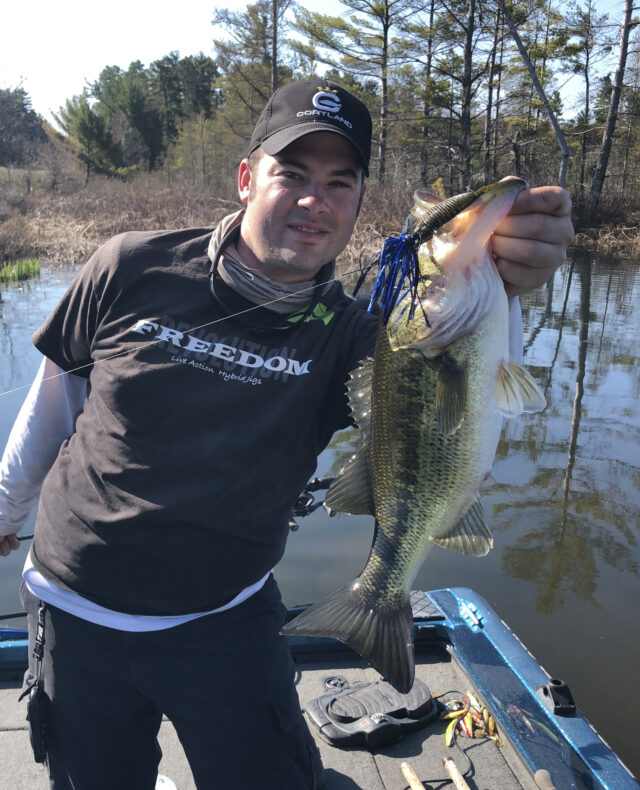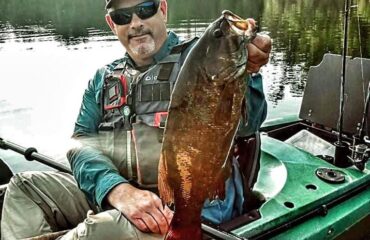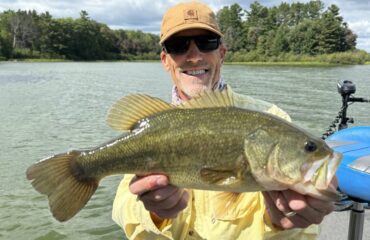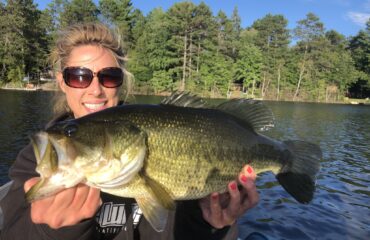Mud Bottoms and Shallow Largemouths
Specific lake locations that conduct heat are instrumental in scoring early season bass fishing success. The areas that warm quickest are determined by underwater structure and the lake’s geography. Typically, shallow muddy bays with exposure to the southern skies, and have inflows, will warm the fastest.
My favorite fisheries are drainage lakes. Some of the bigger lake chains and systems have numerous creek and small stream inflows, adjoining swamp land, and thoroughfares. These will all lead hungry largemouths to an awakening oasis of underwater life. While most of the lake could still be ice covered or recently-opened with 40 degree water, its bays and backwaters could be up to 10 degrees warmer and an aquarium full of life.
Don’t be afraid to fish shallow mud, even if it’s less than 3 ft. deep. On many lakes, largemouth will go as shallow as nature allows. They’ll sun bathe and absorb all the newly created oxygen being produced by emergent plant life and other organisms. We’ve caught a lot of big largemouths within a foot from shore and in only a foot or less.
![]()
Shallow mud and black bottomed bays warm quickly under a bright sun. Additionally, if there’s remnants of decayed grass, old bulrushes, and the root systems to lily pads, so much the better as it’ll give largemouths cover and protection. Logs and wood along bottom will collect heat, creating microwaves for fish to warm next to. If the bay has any distinct channels, ditches, and troughs created from old prop-wash, these little holes can add to its appeal and harbor fish if they choose not to be up near shore.
Look to the extreme shallows and depending upon the layout and configuration of the lake, its northern shores. Importantly, pay close attention to wind direction. If blowing steady to other lake regions with shallow bays, it’s guaranteed to have warming water and possess these ingredients.
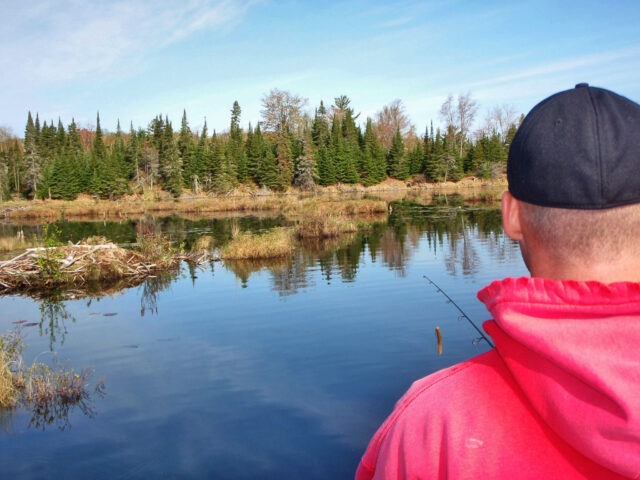
Strategies
Ultimately, fish are looking for the warmest waters they can find. Their movements are rapid. It becomes crucial to gather as many key spots all over the lake and to plot out a milk run of spots beforehand that can be reached and revisited repeatedly throughout the day. Once on the spot, follow your electronics and gauges closely. If the water is warming, stick around and camp on the spot for as long as necessary, especially if the spot produces annually. If water remains cool, move onward to the next spot.
When fish are inactive, and behaving as a byproduct of 40 degree water, a downsized ¼ oz. black/blue jig and pig or jig and craw is a top choice. Crawl the jig slowly along bottom, avoiding any unnecessary maneuvers. Pickups can be light and subtle, even with the sensitivity of a St. Croix Victory rod, so be a line watcher.
Another top choice for inactive ice out largemouth is the ned rig. The lightweight mushroom head jig and plastic combo may look unassuming on the surface, but its slow fall and darting action elicits strikes in even the toughest conditions. Slow swimming & gliding, and dead-sticking retrieves are most effective.
Just the opposite weather and conditions brings speed and power to the forefront of my strategy. I live and die by these baits, and it isn’t necessary to get crazy.
Ripping and cranking 3/8 oz. and ½ oz. Z-Man Freedom Chatterbaits and Jack Hammers through the shallows, rigged with 5” paddletails and 3.75” Bizz Baits Killer Craws, triggers exhilarating strikes.
Burning lipless crankbaits through shallow bays and parallel across lake and pond shorelines entices aggressive, reactionary strikes. This is the best cold water early season tactic. The original Rat-L-Trap and Strike King Red Eye Shad are top choices for this. When the bite is hot, it could be the only bait you’ll throw all afternoon. The sexy shad was all I threw the year prior.
The two aforementioned strategies get accomplished with my St. Croix Mojo Bass Glass Rip-N-Chatter (MGC72HM) paired with 7:3.1 high-speed Quantum PT reel. Line choice varies by cover type, but I settle for either 15 lb. fluorocarbon or 20 lb. Cortland Masterbraid.
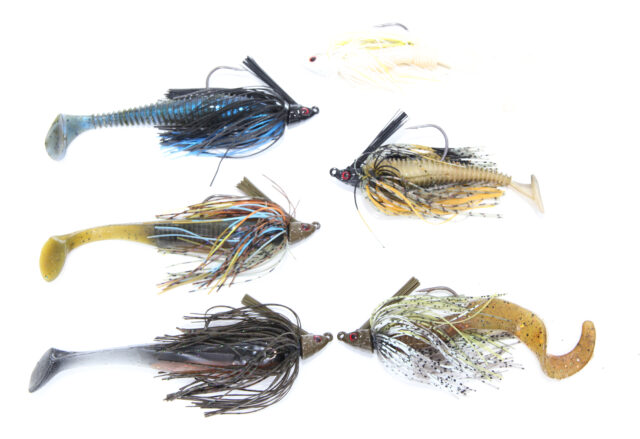
While rip and burn strategies wake up largemouths, more streamlined, horizontal presentations could be favored instead. Swim jigs such as Freedom Tackle Corp’s. FT Series swim jig are designed to be be swum through vegetation, wood, and other shallow junk. Trailers are the business end of a swim jig, and play a more important role than the jig itself.
Often, the biggest largemouths to come on swim jigs will be triggered by a larger bulkier trailer. If favoring steady retrieves, I use big 5” paddletails that generate a wide wobble and tail kick. If fish are responding to slow and erratic lift and drop retrieves, I’ll pair the jig with a 4” craw or creature instead.
My 3/8 oz. and ½ oz. swim jig with trailer concoctions each get fished with the Mojo Bass Dock Sniper (MJC70HF), and Legend Tournament Bass Dock Sniper (LBC70HF). Each reel is spooled with 20 lb. Cortland Masterbraid. The swim jig scores huge numbers of bass.
Subtler, more compact presentations like swimming a 3” Storm WildEye Shiner scores ice out giants. Downsized swimbaits represent a new, overlooked way of catching big largemouth. It’s also a potent presentation that has not yet been exploited by the masses to catching largemouth bass during the early spring season.
Remember that most bass will still be lethargic, and mostly unwilling to commit to strikes until water temperatures rise into the mid-40’s. Unless it’s a search lure like the few described for largemouth, everything must be worked patiently and slowly.
It’s a feast or famine time of year. The best aspect about ice out fishing is their heavy schooling and concentrating. Within hours after ice out, my boat’s caught and released as many as 50 largemouths in a single afternoon.
Always seek the warmest water and habitats available.
